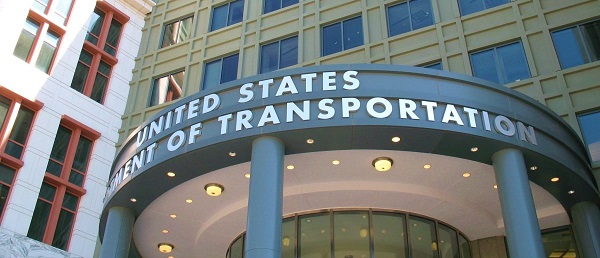Alberta
Wait times down. Better EMS response times. Province releases results of 90 day Health Care Action Plan
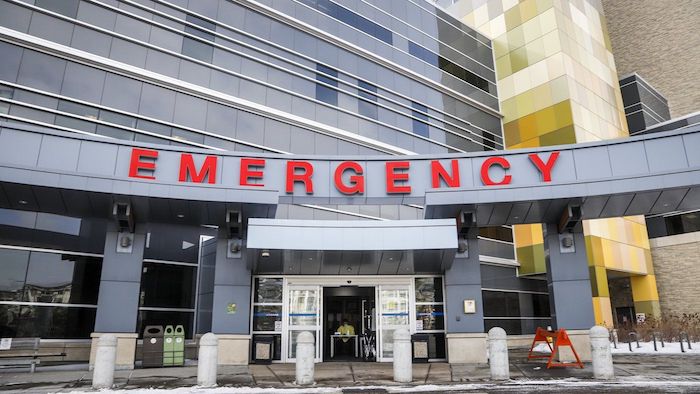
90-day HCAP update: Health care wait times dropping
Albertans are spending less time waiting for the medical care they need since the Health Care Action Plan (HCAP) was launched.
Alberta has the best front-line health care workers in the world, and Alberta’s government will work to have the right supports in place to ensure Albertans get the care they need when and where they need it. When Alberta’s HCAP was launched on Nov. 17, Alberta’s government identified four different areas on which it would work with Alberta Health Services to improve. After 90 days, Albertans are seeing improvements in all four areas.
“We are delivering on our promise to reduce wait times, add more front-line staff and keep Albertans updated on the progress we’re making. There is no one silver bullet to fixing our health care system, and change will take time. But positive change is happening, and Albertans are receiving better access to the level of care they need when and where they need it. We appointed Dr. John Cowell as official administrator to speed up improvements and make sure Albertans are getting high quality of care sooner and we are seeing some good, early results.”
Improving EMS response time
In an emergency, every minute counts and over the past three months, ambulances have been responding faster to emergency calls. Improved ambulance times means that Albertans are receiving the urgent care they need from highly skilled paramedics more quickly.
From November to the end of January, EMS response times for most urgent calls improved across the province in metro, urban, rural and remote areas. The decrease in EMS wait times across the province can be broken down to:
- 17 minutes in metro and urban areas, down from 21.8 minutes
- 19.2 minutes in communities with more than 3,000 residents, down from 21.5 minutes
- 34.9 minutes in rural communities with fewer than 3,000 residents, down from 36 minutes
- 57.5 minutes in remote communities, down from 63.9 minutes
In addition to improved EMS wait times, more ambulances have been available, meaning that red alerts, which indicate a lack of ambulance availability at a point in time, were substantially reduced in Edmonton and Calgary:
- Edmonton has seen a 92 per cent reduction in the number of alerts issued in January 2023 compared with January 2022.
- Calgary has seen a 60 per cent reduction over the same period.
The initiative to triage 911 calls to the most appropriate level of care has also played a role in ensuring paramedics are able to answer the most urgent calls. Since the program was launched in January, 1,600 callers with non-urgent conditions were transferred from 911 to Health Link registered nurses. Alberta’s government is pleased to see progress on its aim to reduce EMS wait times and will continue working to further decrease the amount of time an Albertan waits for an ambulance to arrive.
“The good news is wait times are trending in the right direction and Albertans are getting the care they need more quickly. More doctors, nurses and paramedics are available to help Albertans, and more help is on the way as Alberta continues to add front-line workers for ambulances, ERs and across the system.”
Reducing surgery wait times
Alberta’s government continues its work to reduce surgical wait times for Albertans. Part of a strong health care system is ensuring that Alberta patients are receiving their surgeries within clinically recommended times. Since November 2022, the number of patients waiting longer than the clinically recommended time has decreased by 9.4 per cent.
Alberta’s chartered surgical facilities are helping to reduce wait times and ensure Albertans are receiving the surgeries they need to improve their health and their quality of life. Nearly 7,000 more publicly funded surgeries were completed at chartered surgical facilities in January compared with November, a number that includes orthopedic and eye surgeries. As this work continues, AHS is focused on ensuring that those patients who have waited the longest for surgery are prioritized.
“I would like to thank our incredible front-line workers as well as our AHS leaders, who have worked extremely hard to identify and implement improvements to our health care system, with focus on our priority areas. We have emerged from an extremely challenging time, and I am optimistic that we will continue to see improvements that will benefit all Albertans whenever they need our care and support.”
Decreasing emergency room wait times and improving access to care
Alberta’s government is also encouraged to see that in January, more Albertans received care sooner when they visited emergency departments. Progress in lowering emergency department wait times has been seen in the two measures:
- Wait time to see a doctor in an emergency department decreased by almost 10 per cent provincially since November.
- Time spent in an emergency department for admitted patients has been reduced by about five per cent.
There is still work to be done to ensure Albertans have lower wait times in emergency rooms across the province, and Alberta’s government will continue to make policy and funding decisions to see those improvements. In January, the number of assessed patients waiting in the province’s top 14 hospitals for a continuing care space was 179, lower than the 218 patients in the 2018-2019 fiscal year, and also lower than the 253 patients waiting in November 2022. A number of changes have helped to spur progress on emergency department wait times from November to the end of January:
- AHS opened 255 new acute care beds (non-intensive care unit) across the province.
- More beds in continuing care facilities have been opened – freeing more hospital beds for urgent care: 55 new long-term care beds, 292 new designated supportive living beds and 38 new community addiction and mental health beds.
- Additionally, 36 new transition beds for people discharged from ERs in Edmonton who are experiencing homelessness will be opened this year.
Empowering health care workers to deliver health care
Alberta continues to hire more health care workers to support key areas. AHS is adding 420 more positions in emergency rooms, acute care, EMS and community care, on top of the nearly 400 front-line and support staff hired since November. If passed, Budget 2023 would provide $158 million for a new Health Workforce Strategy to make sure the province has the medical professionals needed and to improve the work environment.
Alberta is making good progress on increasing the number of highly skilled doctors, nurses, paramedics, nurse practitioners and other health allied professionals in the province:
- AHS added 800 registered nurses, licensed practical nurses and health care aides in 2022.
- Since 2019, AHS has added 5,800 front-line staff, including 1,800 registered nurses and 300 paramedics.
- AHS recruited 28 physicians to rural Alberta and added 278 more registered nurses, licensed practical nurses and health care aides since November.
- EMS added 39 front-line staff, including paramedics and emergency communications officers, over the last three months.
- 80 additional full-time paramedic positions are being recruited, and AHS is transitioning 70 current temporary full-time EMS positions to regular full-time.
- AHS is currently hiring 114 full-time nursing staff for emergency department teams to speed up EMS transfers and free up paramedics to respond to more calls.
Alberta
Thousands of Albertans march to demand independence from Canada
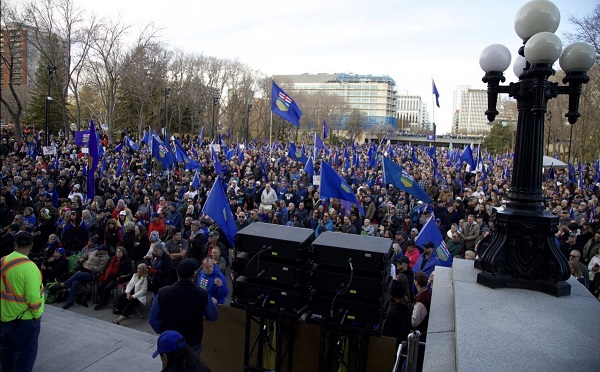
From LifeSiteNews
Thousands of Albertans marched upon the province’s capital of Edmonton this past Saturday in the “I Am Alberta Rally,” calling for the province to immediately secede from Canada in light of increasing frustration with the Liberal federal government.
The rally saw an estimated 20,000 to 30,000 people march on the steps of the Alberta legislative building, demanding that a referendum be held at once to allow Alberta to leave Canada.
“We can’t delay. We can’t slow down,” well-known freedom lawyer Keith Wilson said at the rally as he spoke to the crowd.
“This is our moment. This is our future. For our families, for our children, for Alberta. Alberta will be free.”
The group behind the rally, the Alberta Prosperity Project (APP), bills itself as a sovereignty advocacy group. As reported by LifeSiteNews earlier this year, the APP wants to put Alberta independence to a question to the people via a referendum.
The rally also comes after certain members affiliated with the APP such as Jeffrey Rath and Dr. Dennis Modry earlier the month met in Washington, D.C. with cabinet-level U.S. politicians to discuss Alberta’s potential independence from Canada.
U.S. President Donald Trump has routinely suggested that Canada become an American state in recent months, often making such statements while talking about or implementing trade tariffs on Canadian goods.
The APP on July 4 applied for a citizen-led petition presented to Elections Alberta that asks, “Do you agree that the Province of Alberta shall become a sovereign country and cease to be a province in Canada?”
The group is hoping to have the referendum on the ballot as early as next year and has accused the Liberal federal government of encroaching on Alberta’s ability to manage its own affairs.”
The group says an independent Alberta would allow it to “keep our resources, grow our economy, and reinvest in Alberta families, businesses and infrastructure.”
As it stands now, the referendum question has been referred to the courts to see whether or not it can proceed.
Alberta Conservative Premier Danielle Smith does not support a fully independent Alberta. However, she does advocate for the province to have more autonomy from Ottawa.
As reported by LifeSiteNews, Smith said her conservative government will allow but not support a citizen-led referendum on independence.
Despite not advocating for an outright separate Alberta, Smith’s government has not stood still when it comes to increasing provincial autonomy.
Smith’s United Conservative government earlier this year passed Bill 54, which sets the groundwork for possible independence referendums by making such votes easier to trigger. The bill lowers the signature threshold from 600,000 to 177,000.
As reported by LifeSiteNews last week, Smith’s government introduced a new law to protect “constitutional rights” that would allow it to essentially ignore International Agreements, including those by the World Health Organization (WHO), signed by the federal Liberal government.
The calls for independence have grown since Liberal leader Mark Carney defeated Conservative rival Pierre Poilievre.
Carney, like former Prime Minister Justin Trudeau before him, said he is opposed to new pipeline projects that would allow Alberta oil and gas to be unleashed. Also, his green agenda, like Trudeau’s, is at odds with Alberta’s main economic driver, its oil and gas industry.
Alberta
Premier Smith sending teachers back to school and setting up classroom complexity task force
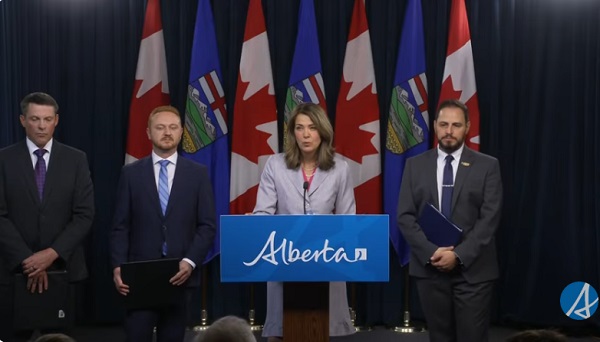
Taking action on classroom complexity
As schools reopen, Alberta’s government is taking action by appointing a class size and complexity task force to meet the challenge of increasingly complex classrooms.
Across Alberta, teachers are seeing more students with diverse learning needs and behavioural challenges, while incidents of classroom aggression are rising. To address these challenges head on, and in response to concerns raised by teachers, Alberta’s government will be appointing a Class Size and Complexity Task Force.
We recently formed the Aggression and Complexity in Schools Action Team to identify practical classroom focused solutions. Alberta’s government has received the action team’s draft final report and will use its recommendations to create a roadmap for safer classrooms. Alberta’s government will release the final report, and the task force will implement solutions, work with school boards to gather more data on classroom complexity and begin work to replace the 2004 Standards for Special Education.
“Teachers have made it clear that addressing classroom complexity and safety are among the most critical improvements needed in our education system. We are taking real action to meet those needs by strengthening classroom supports, hiring more teachers and educational assistants, and acting on the recommendations of the Aggression and Complexity in Schools Action Team. Parents, teachers and students all want the same thing – safe and supportive classrooms where every child can succeed.”
Teachers are vital to the success of Alberta’s education system. Over the next three years, school boards will be provided with funding to hire 3,000 teachers and 1,500 new education assistants to support students with complex needs. These funds may also be allocated to additional student support through assessments for complex needs, occupational therapy, physiotherapy or speech-language pathology, and other in-the-classroom supports.
“No teacher should ever be harmed while doing their job. We know that aggressive incidents have gone up sharply in recent years, and classrooms are becoming more complex. That’s why we’re doubling down on efforts to make classrooms safer and to give extra support to students who need it. Our goal is to create learning environments where every student can succeed.”
In November, Alberta’s government will work with school boards to gather information and data about class sizes and composition to ensure students are receiving the support they need. Information will be made available as soon as it is available and will be released annually thereafter.
Quick facts
- Between July and September 2025, the action team conducted engagement sessions with teachers, education partners and school boards through in-person and virtual sessions.
- This included front-line educators, families, disability organizations, community agencies, early learning experts and social service professionals.
- Budget 2025 included $55 million to help address classroom complexity – a 20 per cent increase from the previous year.
Getting Alberta’s kids back to school
If passed, Bill 2, the Back to School Act, will restore stability in Alberta’s education system and ensure students can return to learning without further disruption.
The ongoing teachers’ strike has disrupted classrooms across Alberta, setting back student learning and deepening achievement gaps. Each day schools remain closed, students lose critical instructional time, routine and support. This proposed legislation will end the strike and establish reasonable terms for a new teacher collective agreement.
“This strike has gone on long enough. It’s clear there’s no path forward unless we act. The Back to School Act refocuses everyone on what matters most, the education of Alberta’s students. Bill 2 puts students back at the centre of our system, while we continue to work with teachers and families to build lasting stability in Alberta’s schools.”
The Back to School Act legislates the terms of the September 2025 tentative agreement, which provided a 12 per cent salary increase over four years, additional market adjustments of up to 17 per cent for most teachers, and the hiring of 3,000 teachers and 1,500 educational assistants. The collective agreement will be in effect from Sept. 1, 2024, to Aug. 31, 2028.
“The time for labour stability is now. This legislation provides a positive path forward despite an interrupted school year. This is a necessary step and the most responsible decision for kids, teachers and parents. If Bill 2 is passed, it is my hope that classes will resume as soon as Wednesday, October 29.”
The last deal put on the table by the Alberta Teachers’ Association demanded an additional $2 billion from government. This was a clear display that the union had no intention to bargain in a reasonable manner with the government and present a fair offer.
“We believe invoking the notwithstanding clause is a necessary measure to end the undue hardship caused by the teacher strike. This strike has reached a point that is causing irreparable harm on student learning. Our government will not hesitate to use every available legal tool in defence of students.”
This legislation is the only responsible path forward to restore stability, protect students and ensure Alberta’s classrooms focus back on learning. Alberta’s government remains fully committed to strengthening the education system, supporting teachers, and putting the success and well-being of students at the heart of every decision made.
Key facts
- Bill 2 would end the province-wide teachers’ strike and legislates a new collective agreement.
- The agreement covers Sept. 1, 2024, to Aug. 31, 2028 and provides:
- A 12 per cent salary increase over four years.
- Additional market adjustments of up to 17 per cent for 95 per cent of members.
- 3,000 new teachers and 1,500 educational assistants to reduce class sizes and enhance support.
- These terms reflect the September 2025 tentative agreement recommended by the Alberta Teachers’ Association leadership.
- The legislation includes financial penalties for non-compliance and suspends local bargaining during the agreement to ensure labour stability through 2028.
-
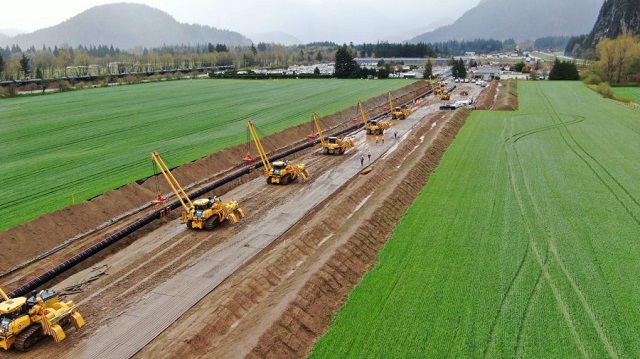
 Business16 hours ago
Business16 hours agoTrans Mountain executive says it’s time to fix the system, expand access, and think like a nation builder
-

 Alberta2 days ago
Alberta2 days agoCoutts border officers seize 77 KG of cocaine in commercial truck entering Canada – Street value of $7 Million
-

 Business2 days ago
Business2 days agoThe painful return of food inflation exposes Canada’s trade failures
-

 Alberta1 day ago
Alberta1 day agoPremier Smith sending teachers back to school and setting up classroom complexity task force
-

 Alberta1 day ago
Alberta1 day agoThousands of Albertans march to demand independence from Canada
-

 Addictions18 hours ago
Addictions18 hours agoThe Shaky Science Behind Harm Reduction and Pediatric Gender Medicine
-

 Business2 days ago
Business2 days agoOttawa Bought Jobs That Disappeared: Paying for Trudeau’s EV Gamble
-

 Crime1 day ago
Crime1 day agoSuspect caught trying to flee France after $100 million Louvre jewel robbery




